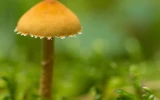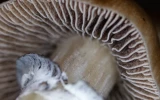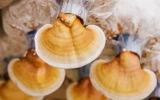7 Tips to Fruit Monotub More Quickly and Successfully
Are you tired of low yields and complicated setups when growing mushrooms? The monotub method is a fast, easy, and affordable technique that can produce large yields of mushrooms when done correctly. While the method itself is straightforward, there are some easy ways to improve your results.
To fruit quickly and successfully using the monotub method, provide an ideal temperature range, expose the tub to indirect light, maintain high humidity, establish air exchange, provide a sterile environment, use a high-quality substrate, and mist and fan the tub daily until fruiting ends.
If you're new to mushroom growing, the monotub method is a great option for a fruiting chamber. To help you achieve fast and successful fruiting, we've put together seven tips specifically for this method. Keep reading to learn how to maximize your success with the monotub method.
Summary
- Quick and successful fruiting using the monotub fruiting chamber may be induced by providing ideal temperature, humidity, air exchange, and light intensity.
- Providing sterile growing conditions as well as using a high-quality mushroom substrate can help accelerate the fruiting process in a monotub fruiting chamber.
- To promote faster fruiting, you can mist and fan the monotub daily until the fruiting stage concludes.

7 Successful Tips that Will Speed Up the Fruiting Process in Monotubs
The monotub method offers a great way to start mushroom cultivation by producing consistent, high-quality fruiting bodies. Building a monotub chamber is cheap and only requires minimal space. It can also easily control environmental conditions such as humidity and air exchange.
If you are after versatility and low-maintenance fruiting chambers, monotub setups are for you. Below are some tips to fully utilize your monotubs and speed up the fruiting process to produce healthy and high-quality mushrooms successfully.
1. Provide ideal monotub fruiting temperatures to speed up the fruiting process
The temperature remains one of the most influential factors in the growth of mushrooms. The warmer the temperature, the faster the mushrooms tend to grow. In contrast, some mushrooms grown at cooler temperatures may grow slower but can produce meatier and higher-quality mushrooms.
Fruiting conditions are triggered when the ideal temperature range for fruiting, which is between 55–75 °F (18–24°C), is achieved.
In a monotub set-up, the ideal temperature inside must be kept between 60°F and 80°F to allow your mushrooms to fruit. In general, mushrooms tend to grow fastest at a temperature range of 55–75°F, so you can adjust the temperature within this range to speed up the fruiting process.
Different types of mushrooms require different fruiting temperatures. To know the ideal temperature for different types of mushrooms, make sure to read this article.
2. Keep enough humidity inside the monotub to accelerate fruiting
Keeping a balanced humidity level plays a big role in the success of the fruiting process in mushrooms. Lack of humidity can cause mushrooms to stall, crack, or become discolored. However, too much of it can also affect the growing process, as bacterial blotches or molds may develop and compete with the mycelium within the substrate.
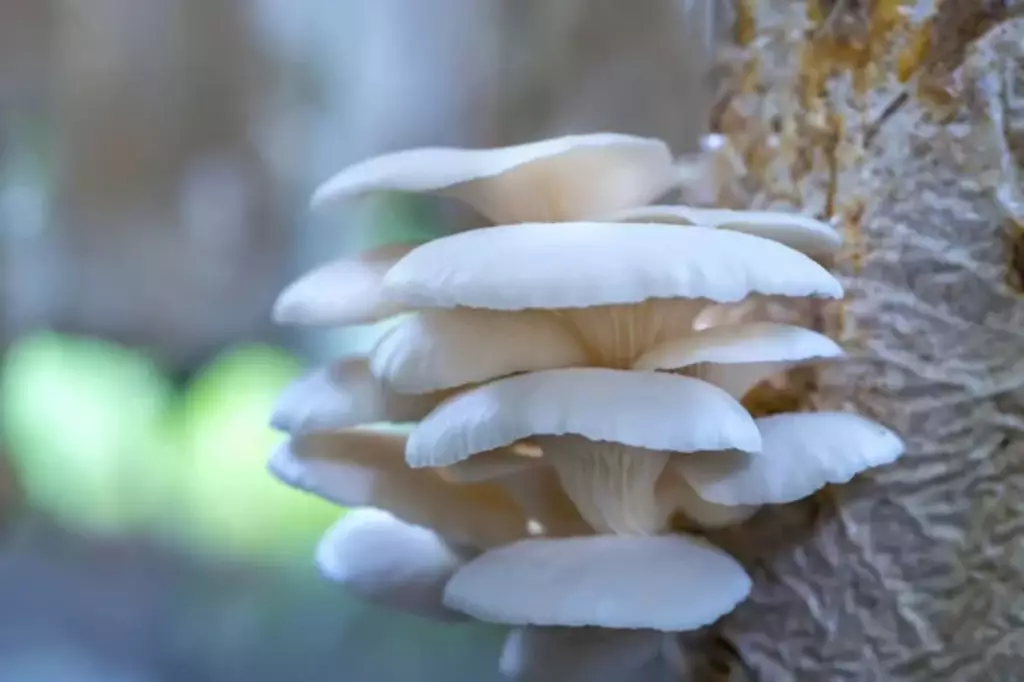
Due to this, a specific humidity level must be achieved to quicken fruiting. Most mushroom species prefer a humidity level between 80-95% to start the fruiting stage. During the initiation phase, which is the first four crucial days of fruiting, maintain a humidity level of about 90%.
This humidity can be dropped to 75–80% once the mushrooms start forming the pins without negatively impacting the fruiting process.
3. Establish good air exchange inside the monotub to accelerate the fruiting process
If you decided to fruit your mushrooms using the monotub technique, you should know how it works and why holes are drilled on both sides of the tub. These holes will serve their purpose after the mycelium has gone through the incubation phase and has fully colonized the substrate.
The drilled holes on the sides of the tub will allow for air exchange during the fruiting stage. These holes are covered with monotub filters that trap contaminants but allow fresh air to pass through and CO2 to be removed from the inside.
The ideal range of CO2 levels during the fruiting stage must be between 500-800 ppm. High CO2 levels may cause a decrease in mushroom yield. Lack of fresh air, on the other hand, produces uneven mushroom growth with long stems and small caps. At least one air exchange per hour is required to support the growth of your mushrooms.
4. Subject the tub to indirect light exposure to encourage a quick fruiting process
Contrary to the popular belief that mushrooms grow best in the dark, mushrooms require a bit of light, especially when encouraging them to fruit. In fact, there are mushroom species that, when beginning to form pins, will tend to grow in the direction of the source of light.
The introduction of light also mimics the natural growing environment of the mushrooms when the mycelium finally reaches the surface of the soil, which signals fruit.
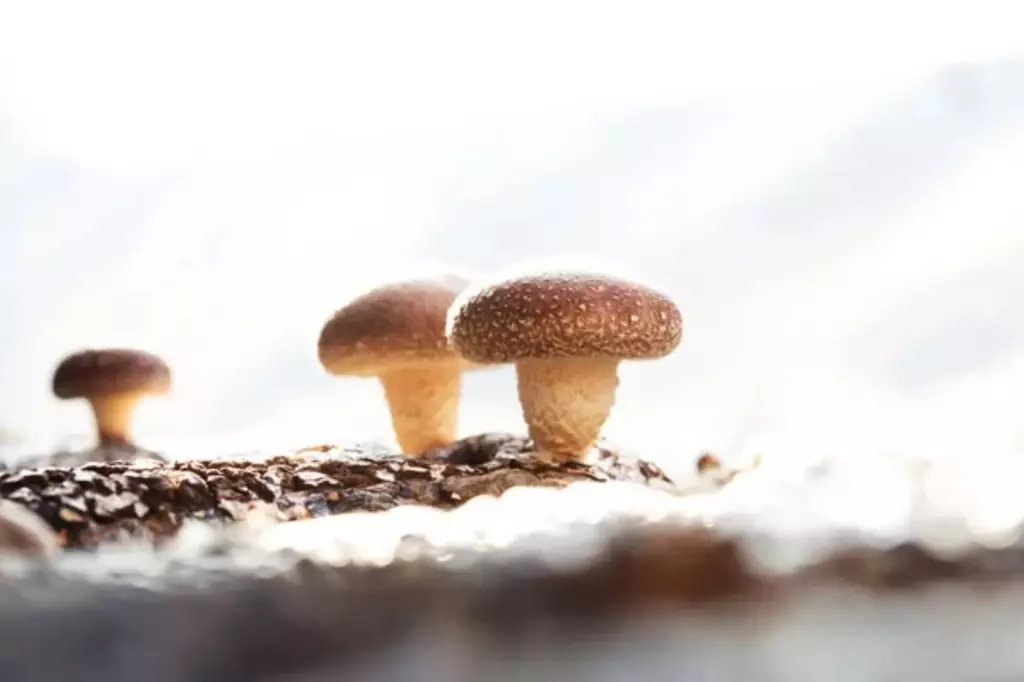
The best types of light to use in fruiting chambers are those in the range of 6500 K, which is like natural daylight. Subject your tub to a scheduled light exposure, either a 24-hour cycle or a 12/12 cycle in which the light is on for 12 hours and off for the next 12 hours.
Ideally, most mushrooms prefer a “16 hours on and 8 hours off” light schedule (16:8). This is also preferred by most growers since a long stay in the dark may cause the mushrooms to have long stems.
5. Provide sterile growing conditions to hasten the fruiting process
One of the best ways to produce fruiting bodies successfully and quickly is to avoid contamination issues. This can be done by ensuring that the materials, equipment, and location where you conduct all your preparation processes are clean and sterile.
A sterile environment can help accelerate mushroom growth. Although 100% decontamination is impossible, keeping everything sanitized, including yourself, decreases the chance of contamination.
Some of the best practices to help maintain a sterile environment are the following:
- Practicing good personal hygiene and wearing gloves and a facemask when working on your mushrooms
- Vacuum floors and disinfect and sanitize all surfaces in the working area by using either 70% isopropyl alcohol or 3% hydrogen peroxide
- Use clean water in all the processes, from hydration to misting
- Sterilize or pasteurize the substrate of your choice to reduce the risk of contamination
6. Use a high-quality substrate that will quicken the process of fruiting
A mushroom substrate is the main source of nutrients, energy, and moisture for growing mushrooms. A high-quality substrate must be filled with fiber, be tolerant of harsh conditions, have a good absorbing capacity, and be resistant to pests, bacteria, and molds.
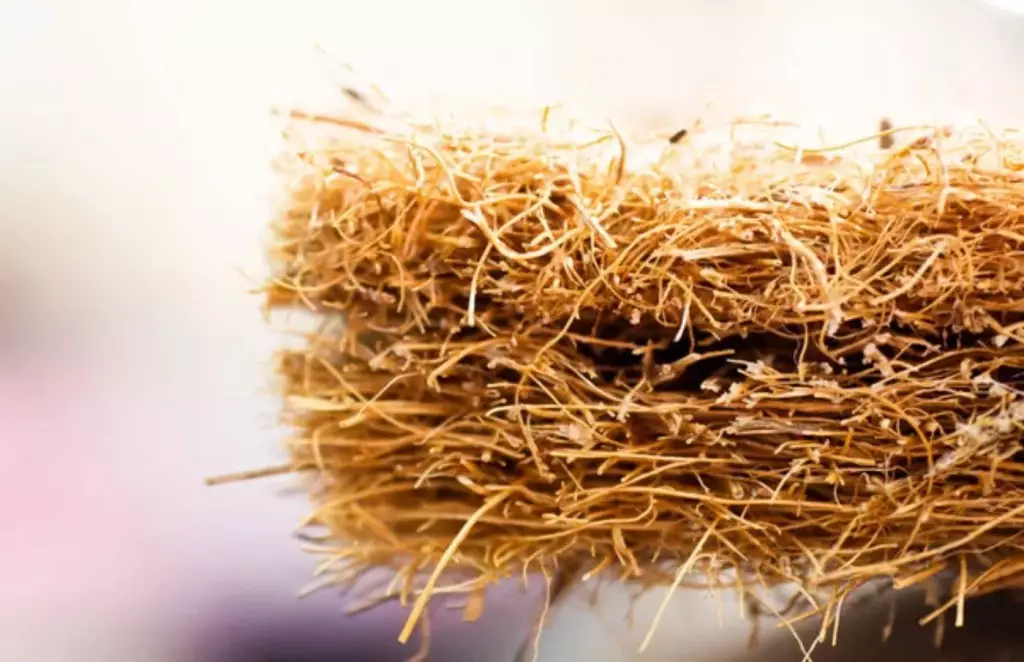
It must have also been decontaminated using sterilization and pasteurization techniques. A high-quality substrate must contain at least 1–2% of nitrogen and trace amounts of magnesium, phosphorus, sulfur, potassium, and calcium. If your substrate possesses all these qualities, you can ensure fruiting in no time.
Some of the easiest substrate recipes applicable to different mushroom species can be found below:
- Shiitake mushroom substrate recipe
- Oyster mushroom substrate recipe
- Coco coir and vermiculite substrate recipe
7. Mist and fan the tub daily to promote quick and successful fruiting
If you’re able to provide ideal growing conditions for your monotub fruiting chamber, the only additional monitoring you can do to ensure healthy and successful mushroom growth is to mist and fan your monotub.
Misting must be done once a day throughout the entire fruiting process. To properly mist, slightly lift one end of the tub lid and spray at least 10 pumps of clean water to the walls of the tub, not directly on the substrate or the pins.
After misting, you can use the lifted part of the lid to create a fan-like motion by moving it up and down. This creates additional airflow and removes any CO2 buildup during the fruiting process. Perform fanning twice a day for 30 seconds each round. This will continue until your substrate stopped producing fruiting bodies.
